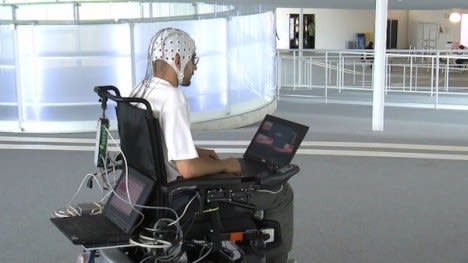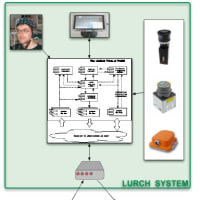Smart wheelchair with brain signal recognize for totally paralyzed persons.
A smart wheelchair, or autonomous wheelchair, typically consists of either a standard powered wheelchair to which a computer and a collection of sensors has been added or a mobile robot base to which a seat has been attached. The typical control system used by smart wheelchairs, based on the use of a joystick,is not suitable for totally paralyzed persons.Millions of people in the world suffer from several diseases (e.g., amyotrophic lateral sclerosis ― ALS, multiple sclerosis, cerebral paralysis, spinal cord injury) that destroy the neuromuscular channels used by the brain to communicate and control body movements. This calls for the development of a flex-ible system, able to adapt also to the necessity of completely locked-in individuals. So challenging an objective can be achieved by a system able to determine user’s intentions through the analysis of his/her cerebral signals and to transmit this information to an external device, such as a wheelchair. This system is called brain-computer interface(BCI).
There are several methods to acquire the cerebral signals; among them, I choose to consider the electroencephalogram (EEG) because of the advantages that it brings in terms of non invasivity, practicality, safety and low cost. Electroencephalography (EEG) has emerged as a promising way for paralyzed patients to control computers or wheelchairs. But EEG has limited accuracy and can only detect a few different commands.
How incredible would it be for a person who can't move their arms or legs to be able to literally think their way around a room, avoiding obstacles and getting where they want to go with mind-power. A new wheelchair created combines brain messages with artificial intelligence to give hope for independent mobility to paralyzed people.
This is sample design of smart wheelchair using brain messages recognize.

To work the chair, brain signals such as imagining moving your right arm to go right or your left arm to go left, are sent to the chair as commands, and the chair combines the commands with artificial intelligence and data from two webcams installed on its sides to maneuver around things like chairs, tables and other obstacles. Perhaps what is even more amazing, is the user needs only a few hours of training per day over the course of a week to master using the chair.



Thank you for your time to read my article...
Dwi Arman Prasetya
5010460040














